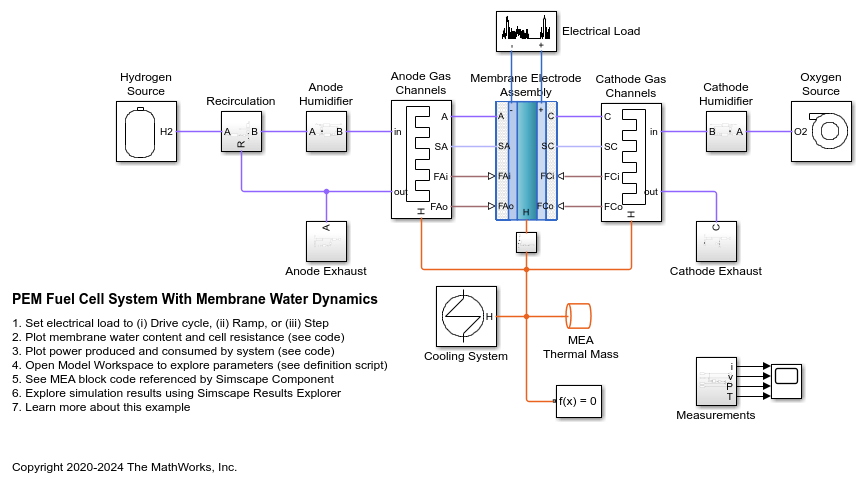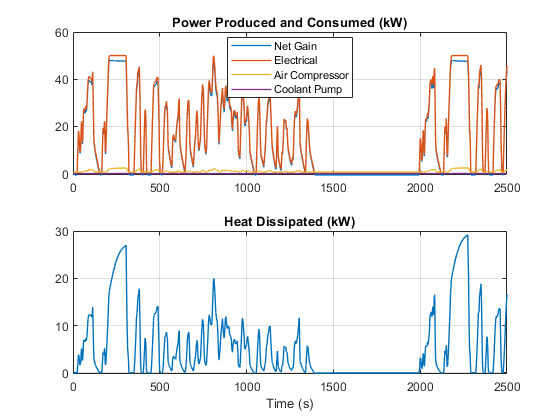Model PEM Fuel Cell with Membrane Water Dynamics
This example shows how to model a proton-exchange membrane (PEM) fuel cell stack with a custom Simscape™ block. The block models the water transport dynamics that occur in the membrane electrode assembly (MEA) of a PEM fuel cell. For more information about the water transport dynamics, see the Fuel Cell Equivalent Circuit block.
The PEM fuel cell generates electrical power by consuming hydrogen and oxygen and producing water vapor. The electro-osmotic drag and diffusion moves this water through the membrane, affecting the cell ohmic losses and the overall fuel cell performance.
Open Model
The custom block represents the MEA and connects to two separate moist air networks: one for the anode gas flow and one for the cathode gas flow. These moist air networks determine the boundary conditions of the water dynamics through the MEA. To see the Simscape code of the custom MEA block, at the MATLAB® Command Window, enter:
FuelCell.ssc
This example focuses on the composition of the Simscape™ Battery™ block with the existing example using Simscape™ Fluids™ Moist-Air domain components. For more background on these components, see the PEM Fuel Cell System example.
The custom MEA block with the dynamic membrane model links the behavior of the water transport phenomena to the remaining system and allows higher fidelity consideration of the transients that occur at the system level.
open_system('PEMFuelCellSystem') set_param(find_system(bdroot,'FindAll','on','type','annotation','Tag','ModelFeatures'),'Interpreter','off');

View Simulation Results from Simscape Logging
This plot shows the membrane water content distribution and the resultant ohmic resistance of a single fuel cell membrane over the simulation.
PEMFuelCellSystemPlot1Lambda;

This plot shows:
The electrical power that the fuel cell stack produces.
The power that the cathode air compressor and the coolant pump consume to maintain stable and efficient system operation. As a result, the net power that the system produces is a few percent less than the power that the fuel cell stack produces.
The excess heat that the fuel cell stack generates. The dynamic membrane resistance directly affects this excess heat.
PEMFuelCellSystemPlot2Power;

References
D. Zhou, F. Gao, E. Breaz, A. Ravey, A. Miraoui and K. Zhang, "Dynamic Phenomena Coupling Analysis and Modeling of Proton Exchange Membrane Fuel Cells," in IEEE Transactions on Energy Conversion, vol. 31, no. 4, pp. 1399-1412, Dec. 2016, doi: 10.1109/TEC.2016.2587162.